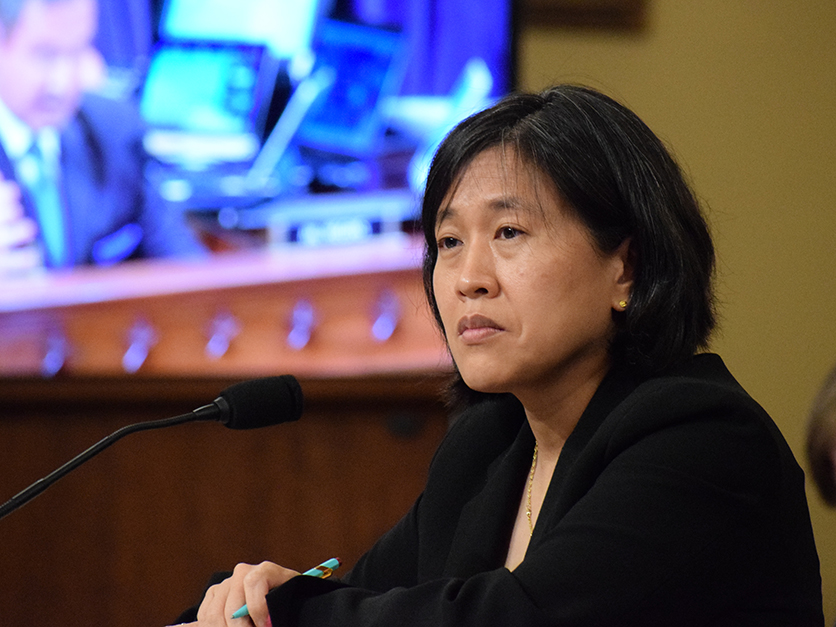The Biden administration Tuesday rolled out its 2022 Trade Policy Agenda report to Congress, pledging to further develop its Indo-Pacific Strategy — an effort to strengthen ties with the Asian region — as well as continue to reduce trade barriers across the globe and bring new reform pressure on China.
The 312-page report, released as President Joe Biden prepares to deliver his State of the Union speech Tuesday evening, makes no mention of intentions to reauthorize Trade Promotion Authority — expired legislation key to approval of new free trade agreements — or plans for any new free trade agreements this year. Instead, the strategy focuses heavily on enforcing existing FTAs and efforts to use trade and investment framework agreements, or TIFAs.
U.S. Trade Representative Katherine Tai used TIFA meetings last year in India, Vietnam, the Philippines and elsewhere to remove trade barriers to U.S. pork, poultry, wheat and other commodities.
Tai unveiled the first details of the Indo-Pacific Strategy about two weeks ago and provoked a tepid response from the U.S. ag sector.
American Farm Bureau President Zippy Duvall praised the proposed economic framework for its potential to “remove barriers for American agricultural exports and strengthen relationships with our neighbors from the Pacific coast to the Indian Ocean,” but he also stressed it was not nearly enough.
“More trade advances are needed in the region, and soon,” Duvall said. “The U.S. is long overdue for a binding multilateral trade agreement with the Indo-Pacific that outlines consistent standards and improves market access through the reduction of tariffs. America’s farmers and ranchers need to be able to compete fairly in the world market.”
Although there are no new market access provisions in what the Biden administration has laid out so far, the Indo-Pacific Strategy will be key to reducing non-tariff trade barriers and more details on the plan will be forthcoming, says USTR.
“USTR will lead efforts to craft a trade arrangement with parties that includes provisions on: high-standard labor commitments; environmental sustainability; cooperation in the digital economy; sustainable food systems and science-based agricultural regulation; transparency and good regulatory practices; competition policy; and, trade facilitation,” the agency said in the report released Tuesday. “The specific content of the trade arrangement will be developed through extensive consultation with trading partners, a broad base of stakeholders, and Congress.”
Looking for the best, most comprehensive and balanced news source in agriculture? Our Agri-Pulse editors don't miss a beat! Sign up for a free month-long subscription.
On China, the Biden administration says it will continue to “focus on the long term,” rallying allied countries to confront Chinese “non-market policies and practices.”
“We are clear-eyed about China’s doubling down on its harmful trade and economic abuses,” the Office of the USTR said in the new report. “We are also mindful that rash response measures can create vulnerabilities of their own.”
Tai stressed just last week that her agency continues to press China to fulfill its pledges under the “phase one” deal, but those discussions are frustratingly slow and difficult.
Meanwhile, the Biden administration says it remains intent on bolstering U.S. capacities to compete with China and, consequently, allow the U.S. to negotiate in the future from a position of strength.
Part of that strength, USTR says, means “taking steps to build supply chain resilience that will protect American workers and consumers from the harms wrought by China’s trade and economic abuses. We are also considering all existing tools — and will potentially seek new ones as needed — to combat the harms of China’s state-led, non-market practices.”
For more news, go to www.Agri-Pulse.com.


